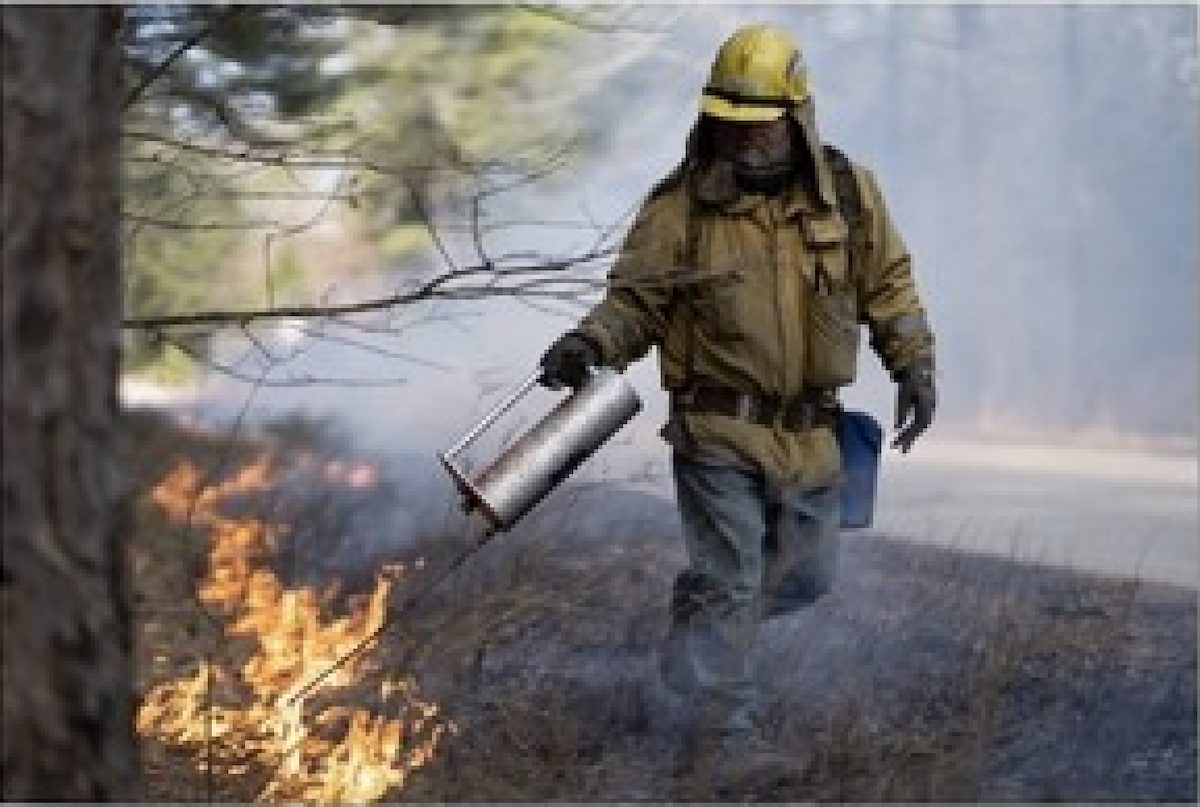194
 The New Jersey Forest Fire Service, an office of the New Jersey Department of Environmental Protection (DEP) will soon begin conducting prescribed burning to reduce vegetation and debris that may contribute to the start and spread of a wildfire. By actively eliminating sources of fuel that exacerbate forest fire risks through a controlled and prescribed burning program, the Forest Fire Service reduces risk to New Jersey residents, visitors and the environment, DEP Commissioner Shawn M. LaTourette said recently. Peak wildfire season in New Jersey begins in late March and continues through early May, depending on rainfall and weather. “It may surprise some New Jerseyans to know that there were more than 900 wildfires last year,” Commissioner LaTourette said. “Proactive forest management, including prescribed burning, is vital to protecting public safety and helps to ensure that we protect the long-term health and success of our forests. By reducing forest fire fuels through strategic prescribed burning, our Forest Fire Service protects New Jersey communities and ecosystems and helps to avoid catastrophic releases of carbon during wildfires that would contribute to climate change.” “Recent events in Colorado, Montana and California have underscored the importance of managing our wildland environments as they interconnect with human development,” said Greg McLaughlin, NJ State Firewarden and Chief of the Forest Fire Service. “We encourage homeowners to visit njwildfire.org to learn how to take steps make their properties safe from wildfire.” To keep the public informed about prescribed burning in their communities, this year, the Forest Fire Service will launch an online tool at njwildfire.org that displays a map where the Forest Fire Service plans to conduct prescribed burns during the next five days. There are multiple benefits to prescribed burning, which is a safe, effective and efficient means of managing the buildup of forest fuels. Prescribed burns improve habitat for plants and animals, reduce the presence of damaging insects and ticks, and recycle nutrients into the soil. In addition, prescribed burning is an important part of the state’s carbon defense strategy. Allowing experts to choose the intensity, timing and interval of fire across the landscape may help prevent a larger uncontrolled wildfire, which would contribute to significant carbon loss.Typically, most prescribed burns take place between February and early April. However, depending on the management objective for a particular area, a prescribed burn may be implemented in the summer or fall. The Prescribed Burn Act, which Governor Phil Murphy signed into law in August 2018, authorized the Forest Fire Service to use prescribed burning as a tool to meet a wider range of management objectives designed to improve forest health and biodiversity. For example, prescribed burning can be an effective tool in managing the spread of nonnative invasive species or to manage grasslands for threatened or endangered bird species. This year, the Forest Fire Service intends to treat 25,000 acres with prescribed fire. Meeting this goal will depend on favorable weather conditions. Most of the Forest Fire Service’s burns will occur on state-owned property such as state forests, parks and Wildlife Management Areas, but the Forest Fire Service also assists private landowners, nonprofit organizations, and county and municipal governments to meet their management objectives through prescribed burning.Several climatological and environmental conditions, all of which influence a burn’s intensity and severity, are considered when conducting prescribed burns to accomplish various resource and ecological objectives, such as reducing hazard fuels and managing habitats. Hazard fuels include excess leaves, pine needles, grasses and groundcover which may act as ‘ladder fuels,’ allowing fire to reach the tree canopy. Further, the Forest Fire Service and Division of Air Quality work together to assess wind speed, humidity and temperature and determine the best days to conduct prescribed burning. In addition to the new online tool, which may be viewed at njwildfire.org, the Forest Fire Service posts their daily prescribed burn schedule on their Facebook page. Residents can also sign up for text or email notifications of prescribed burns by following this link. “Keeping the public informed of when prescribed burns are taking place is critical to keeping our firefighters safe when working along roadways, avoiding impacts from smoke and in helping to minimize reports of wildfires,” said John Cecil, Director of the Division of Parks and Forestry. “The Forest Fire Service works closely with DEP’s Air Quality Program ensuring that prescribed burns do not occur on poor air quality days.” Motorists are reminded to use caution when approaching areas where prescribed burns are taking place, to pay attention to reduced speed limits and to be alert to the presence of Forest Fire Service trucks and personnel that may be working alongside roadways. Nationally recognized for forest fuels management and prevention, New Jersey has been home to numerous studies conducted by the U.S. Forest Service, some of which focused on the effect prescribed fire has on tick populations and carbon storage. Scientists have also traveled to the Garden State from the University of Edinburgh in Scotland to study ember or firebrand production from a wildfire.In 2021, the Forest Fire Service completed prescribed burns on 11,796 acres of state-owned lands, 4,915 acres of other government-owned land and 1,225 acres of privately owned property, for a total of 17,936 acres.New Jerseyans are reminded that peak wildfire season often directly follows prescribed burn season. When in doubt about the source of smoke or whether a fire is part of a prescribed burning operation, call 1-877-WARN-DEP (1-877-927-6337) or 911.To learn more about wildfires in New Jersey, steps to protect property, and other resources, visit www.njwildfire.org |




